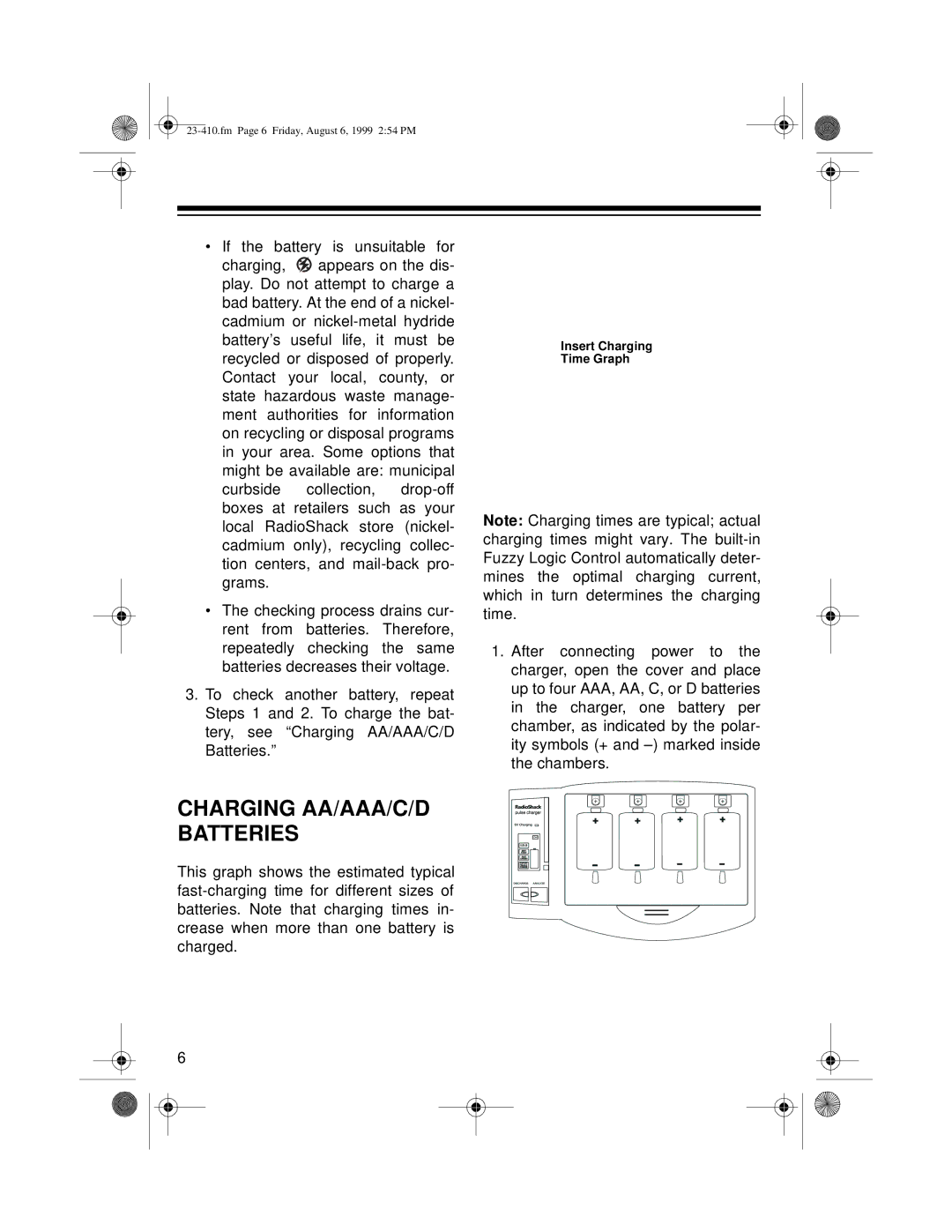23-410 specifications
The Radio Shack 23-410 is a well-regarded model in the realm of portable electronics, particularly known for its versatility as a general-purpose multimeter. Designed for both amateur enthusiasts and professionals alike, this device has carved out a niche due to its user-friendly features and reliable performance.One of the standout characteristics of the 23-410 is its ability to measure a variety of electrical parameters, making it a valuable tool for a range of applications. The device can measure direct current (DC) and alternating current (AC) voltage, resistance, and even current, providing a comprehensive overview of electrical systems. With a clear and easy-to-read LCD display, users can quickly and accurately view measurements, which is essential for troubleshooting electrical components.
The 23-410 utilizes advanced analog-to-digital conversion technology, enabling precise readings with minimal error. This feature is particularly advantageous for users who require accurate data for diagnostics and repairs. The multimeter also incorporates a manual and automatic range selection, further simplifying the measuring process by allowing users to choose the most suitable setting for their task at hand.
In terms of safety, the Radio Shack 23-410 is designed with overload protection, ensuring that users are safeguarded against potential damage from high voltage applications. This built-in protection enhances the overall durability and trustworthiness of the device, making it a reliable choice for daily use.
Portability is another key feature of the 23-410, as it is lightweight and compact, allowing it to be easily transported to different job sites or stored conveniently when not in use. Additionally, it often comes equipped with a protective casing, which aids in preventing physical damage during transport.
Users have also noted the long battery life of the 23-410, which is a significant advantage for those who rely on their multimeter for extended periods. The device is typically powered by standard batteries, which are easy to replace, further enhancing its usability.
In summary, the Radio Shack 23-410 multimeter stands out for its multifunctionality, accuracy, portability, and safety features. Whether being used for basic home projects, professional electrical work, or electronics troubleshooting, the 23-410 offers a reliable solution that has earned the trust of countless users over the years. With its combination of practicality and user-centric design, the Radio Shack 23-410 remains a worthy tool in the toolkit of any electrical technician or hobbyist.

